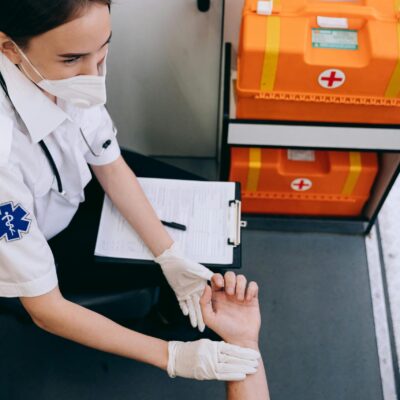
Excerpt of Patient’s Perspective Article
I am a researcher. I have investigated mortality in people with multiple sclerosis (MS), carefully considered the nuances of different definitions of advanced human immunodeficiency virus (HIV), and examined why people with HIV in slum settings drop out of care. While I conducted my research, I did not try to put myself in the shoes of someone living with MS facing an early death from the disease, think about how it would feel to have advanced HIV whether it was defined one way versus another, or imagine being too afraid to go to a clinic for fear of seeing somebody I know who might discover my HIV status. Admittedly, I did not think about the lives of the human beings I was researching; however, there were people’s stories that struck me. There was the time I was poring over patients’ files in an MS clinic to extract data, and I came across a woman whose first realization that something was wrong was when her legs gave out from under her when she was dancing with friends. She was in her 20s. I read her case report more than 15 years ago, and I will not forget it. Another time, research notes revealed that a woman in Kenya was unable to adhere to her antiretroviral therapy because thieves broke into her home and stole her belongings, including her medication. These stories brought the people I was researching to life, but never more so than when I became a patient myself.
Six years ago, when I was nearing the end of my doctoral studies, I had a grand mal seizure and woke up in an ambulance en route to the hospital, where my brain cancer diagnosis awaited. A few months later, a craniotomy left me with not only a partially resected tumor, but drug- resistant epilepsy (DRE) as well. The words “drug- resistant epilepsy” do nothing to conjure up the horror of living with a disease in which you are constantly under threat of attack. With less than seconds of notice, I go from being a seemingly normal, healthy person to one who is drooling, whose face contorts and convulses, and who loudly moans and groans uncontrollably. When the surge of electricity finally releases me, I am left exhausted and literally speechless, as my seizures originate in Broca’s area of my brain. Epilepsy affects my well- being far beyond my 1– 2- min seizures. Prodromes last days, with symptoms including nervousness, nightmares, migraines, exhaustion, and a host of other signs that mimic serious mental health disorders, such as obsessive and intrusive thoughts. Then there is postseizure recovery, which entails at least 3 days of painful headaches and extreme fatigue.
When DRE landed me on permanent disability, I started to research ways to reduce my seizure frequency. I came across the ketogenic diet,4 which helped somewhat. Then I started a high- intensity exercise program (CrossFit), and completely unexpectedly, it reduced the number of my seizures by 33% over a 6- month period. Having two or three seizures per month compared to four made a profound difference in my life.
READ THE FULL ARTICLE








Leave a Reply